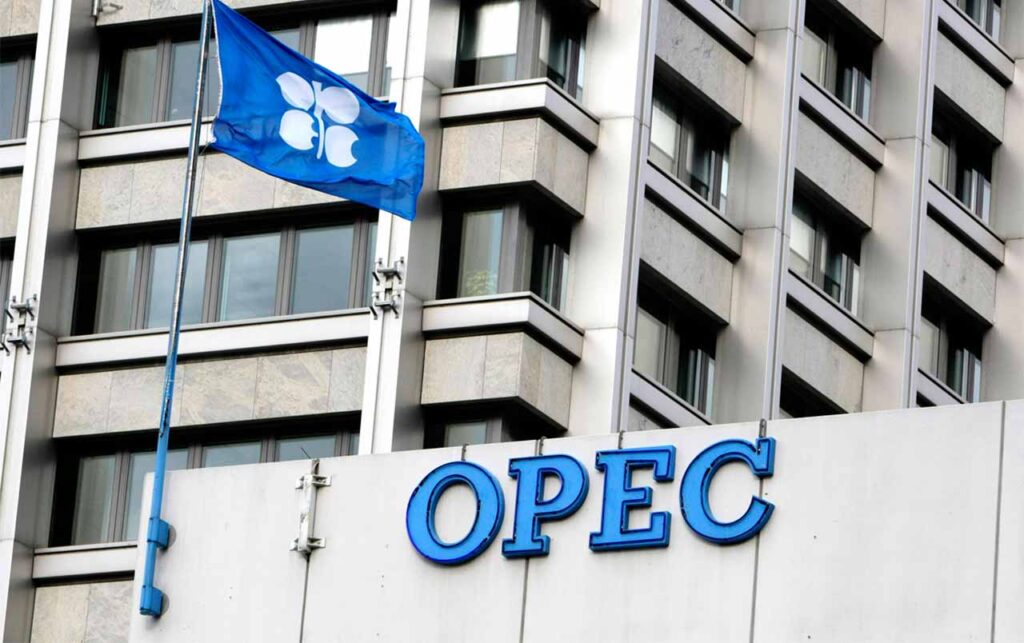Oil stocks have taken a significant hit as US President Donald Trump’s new tariffs, combined with increased production from OPEC+, led to a sharp decline in global oil prices, marking some of the lowest levels in years.
Analysts have also revised their oil price forecasts for 2025 downward, predicting weak demand due to the ongoing trade war and the additional supply from OPEC+.
BusinessDay’s analysis reveals that the Dow Jones US Oil & Gas Index dropped nearly 9% on Friday, with a 15.8% loss over the past two days. Similarly, the S&P Oil & Gas Exploration & Production Select Industry Index fell by 10.7% on Friday and over 20% in two days.
US oil giants experienced heavy losses, with ConocoPhillips falling 18.7%, Occidental dropping 17.8%, Chevron down by 14%, and ExxonMobil shedding 12% in just two days.
European majors also took a hit, with BP losing 16%, Shell dropping 11.8%, TotalEnergies down 10.4%, and Eni down by 9.6%. However, Saudi Aramco, the Middle East oil giant, fared better with a more modest 1.13% loss.
In the broader market, the Dow Jones Industrial Average plummeted by 2,200 points, or 5.5%, on Friday, while the S&P 500 and Nasdaq Composite fell by 6% and 5.8%, respectively. Brent crude futures saw a 5.7% decline, falling to $66.15 per barrel, while West Texas Intermediate (WTI) fell by 6.6%, closing at $62.54.
Henry Hub futures also dropped by 7.5%, settling at $3.83 per million British thermal units. Over the past year, Brent has experienced an 18% loss, while WTI has dropped 18.3%.
Analysts, including Ole Hansen, head of commodity strategy at Saxo Bank, warn that the oil market has entered a “demand destruction phase,” exacerbated by Trump’s unexpected tariff hikes, which are expected to cause further volatility in global economies and supply chains.
“We are seeing both demand and supply destruction, especially from high-cost producers, which will help cushion the fall over time,” Hansen noted.
US shale producers are also facing significant challenges, with profitability under threat. A recent survey by the Federal Reserve Bank of Dallas suggests that break-even prices for US shale operators are around $65 per barrel for WTI. With prices under pressure, US production may stall sooner than expected, potentially allowing OPEC+ members to regain lost market share.
In response to the changing market conditions, major financial institutions have adjusted their oil price forecasts. Goldman Sachs reduced its 2025 forecast for Brent from $73 to $69 per barrel and lowered its WTI projection to $66. The bank also downgraded its global demand growth forecast to 600,000 barrels per day (bpd), down from the previous 900,000 bpd.
HSBC also revised its demand growth forecast, cutting it by 100,000 bpd to 900,000 bpd.
Meanwhile, Morgan Stanley maintained its $67.50 forecast for Brent for the second half of 2025 but warned that the tariffs could lead to a recession, which would reduce year-on-year demand growth to zero.
The most significant blow to the oil sector, however, has come from OPEC+’s surprise decision to accelerate crude output by 411,000 barrels per day starting in May.
This unexpected move has sent shockwaves through the market, with analysts speculating that OPEC+ may have increased production in response to pressure from Trump or to gain market share at the expense of US shale producers.
HSBC suggests that OPEC+ could pause its production hikes if Brent prices settle in the $60-per-barrel range. They also caution that supply disruptions—such as US sanctions on Iran or Venezuela—could push prices higher in the future.
READ ALSO: USTR slams Nigeria’s 25 items ban, says it hurts US exporters



